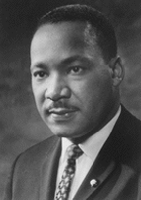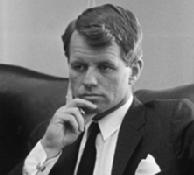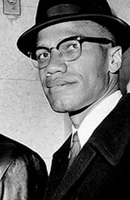(US) Political Assassinations
Linked to
Politics (Rise of the Right) and Performance/Spectacle
1.1 Janelle’s Narrative Begins Here:
The first political event I remember clearly as a young person was the Kennedy campaign for President of the US (1960). My parents were ‘Roosevelt democrats’ and we were all very excited that Kennedy won the Presidency—also because he was Catholic, as was my family, and this meant that Catholics were no longer discriminated against if a Catholic could be President. I was 13 years old.
But of course what I remember more clearly was his assassination in June 1963. It was the first such political murder of the decade, but of course not the last. Here is the famous video of the event (the ‘Zapruder Film’), caught by chance and played and analyzed over and over in the days (and years) ahead:
Not only was this event’s content symbolic, but the form was too—the theatricality of the spectacle was inseparable from the act. A film scholar at Warwick, Stella Bruzzi, specializes in documentary film, and has written perceptively about the problematics of the Zapruder tape and its impact.
1.2 An assassination is a targeted killing of a public figure, usually for political purposes. Within the decade, political assassinations took the lives of three more political leaders in the USA:
1.3 Assassinations List and Picture Gallery:
 |
Martin Luther King, April 4 1968
|
 |
Robert Kennedy 5 June 1968
|
 |
Malcolm X February 21 1965
|
1.4 Janelle Continues:
Although these men were all killed for different political reasons, their deaths became symbolically linked among activists who were working for radical change in the US—those against the Viet Nam War and Civil Rights activists, and everyone who considered themselves ‘Left’ in American politics. The irony is that the political positions of these men were not at all congruent, and their assassins may have had a variety of reasons to want them dead. This ambiguity, however, did not stop the legend-effect of these assassinations. Of the group, Malcolm X is probably least often placed with the others in main-stream history—he was considered too radical by many white US citizens, and he was killed by a black man for ‘internal’ political reasons concerning the direction of Black Muslims at that time.
1.5 Popular Culture explored these men and their stories in various films, theatre, and popular songs.
Watch this clip from Oliver Stone’s Hollywood film version of the John Kennedy assassination story. This is the opening sequence of the film. Notice how the film conflates the differences among these men by flashing the pictures of Bobby, Martin, and Malcolm X in among the John Kennedy photographs, mixing historical footage and fictional re-creation to suggest that they were all part of the same progressive tendencies in American life. By the time of this film in 1991, the legend was firmly in place.
Between the 1970s and 1990s, a narrative of progressive leadership cut down ‘before their time’ became part of the national story for many many people in the US. It was a story that, even as I grew more aware of the complicated facts and contradictory trajectories of these lives and developed a political analysis well to the left of the Kennedys, I nevertheless still internalized as the ‘story of my country’ –so much so that the following popular song (first recorded by a white performer but then covered by many well-known black performers) can still make me cry in 2010. I’ve chosen Marvin Gaye, one of the leading ‘soul singers’ of the time, from a recording at the beginning of our period---1970. It’s a good entry-point:
1.6 If this was the legendary side of the assassinations’ legacy, they also had a darker, performative side: within a short time, assassination attempts were commonplace. Presidents Nixon, Ford, Carter, and Reagan all survived assassination attempts in the 70s and 80s, Reagan’s being the most serious as he was shot and wounded, and his press secretary, James Baker, was permanently disabled. Thus the two decades we are studying were heavily impacted by the spectacular assassinations of the 1960s in ways that provoked carried over into the next two decades.
Violence as a characteristic aspect of US society became especially spectacular during the 1970s and 1980s. The Jonestown massacre (1978) illustrated another kind of violence—the mass suicide of a cult. 909 died in this event, and one California Congressman, Leo Ryan, was shot and killed while investigating ‘The People’s Temple’ in Guyana. Jim Jones was the charismatic leader who had build a congregation in northern California and then moved with his followers to a compound in Guyana renamed Jonestown. This was a radical left group, with a revolutionary agenda, and the way their project ended in violent deaths stunned the US when the actions became known. The other major violent action that appeared for more or less the first time in the 1980s was schoolyard murders. In 1984, one of the survivors of Jonestown who had returned to California opened fire on a Los Angeles schoolyard, killing 1 little girl and wounding 13, and in 1989 Patrick Purdy shot 35 children, five of whom died, in a Stockton California schoolyard. Although now the more famous incidents involve children killing other children (such as the Colombine Massacre in 1999), the site of the schoolyard started to become familiar in the period under study.
1.7 On 27 November, 1978, California, which can be seen as a flashpoint for the nation at this time, saw another devastating assassination. The mayor of San Francisco, George Moscone, and City Supervisor Harvey Milk were shot in their offices and killed by a former member of the City Council and a local policeman, Dan White. The politics of San Francisco were complex at this time and demonstrated the deep divisions in American society. A white, working class, Catholic police officer had killed the mayor and the first openly gay elected official in the country, Harvey Milk. The ostensible reason was because White had resigned his Supervisor seat in angry response to political loss on a key vote, and when he changed his mind and asked for the seat back, the Mayor had refused. Because the political battle had involved conflict with Harvey Milk and because Dan White was opposed to the ascendancy of gay rights in the city, he shot Milk as well as Mayor Moscone. Dan White was found guilty of the murders, but on a reduced charge of involuntary manslaughter and sentenced to only seven years. When the verdict was announced, thousands attacked City Hall and later the police rioted in
Castro street, the heart of the gay district, attacking homosexuals on the street and in the bars. White, who was paroled in 1984, killed himself the following year.
1.8 The Execution of Justice is a documentary play that was written about these events and produced in 1984 and 1986. It was commissioned and developed by San Francisco’s Eureka Theatre, one of the most respected small theatres in the country, and eventually was produced on Broadway after premiering in Kentucky. country, and eventually was produced on Broadway after premiering in Kentucky.
It is the central bead of this string, because it contributed both content and form to our archive—and links to not only left and right politics, but also to questions of identity and spectacularity. The play is a precursor to verbatim theatre in that it was based on interviews conducted in San Francisco, and also on court testimony. The importance of the play is that it stages the contradictions in the polity of San Francisco and the clashing points of view in a way that contributed to public discourse on the events and helped explain them more fully to the public that attended the play.
I have excerpted the first act of the play here, and also chosen one monologue from the second act, to represent the whole. Note particularly in the first act, p.173 how the Kennedy assassination is figured into the text. The structure of the play is a juxtaposition of (usually) two voices or points of view unfolding at the same time—as a cross-cut set of testimonies. The first act pretty well lays out the background issues while the speech of the District Attorney Freitas, after the verdict, both revues the case in retrospect, (mentioning the Regan assassination attempt), and tries to come to terms with the success of the defense’s psychological arguments that succeeded in White getting a reduced sentence and in Freitas being voted out of office.
1.9 Milk (the movie)
To further see how the Moscone/Milk murders entered public consciousness, I turn now to a recent Hollywood film. In 2008, Sean Penn won the Academy Award for Best Actor for his portrayal of Harvey Milk in a widely seen film directed by Gus Van Zant and written by Dustin Lance Black (who also received an Oscar). I have provided a 2 minute link to the trailer for the film, because it catches both an overview of it, but also because the ‘pitch’ or ‘hype’ of this advertisement for the film says a great deal about how it appealed to ‘middle America’:
This film was not, however, the first art work to circulate widely in the public sphere (Theatre is a minority art form in the US, and while Execution of Justice was an important and successful play, but its impact could not be compared to a major Hollywood film in terms of wide-spread distribution.) In addition to the play and film I’ve included here, there was a successful biography, The Mayor of Castro Street, by Randy Shilts (1982) and an important documentary film, The Times of Harvey Milk, (1984) directed by Rob Epstein and narrated by Harvey Fierstein (a well-known gay playwright), which also won the 1984 Academy Award for best documentary. It gives a more thoughtful and scholarly, though not less moving, treatment to this story, and both together capture well the importance of these events for US political history and consciousness. Here is an extract from the documentary, which shows the real historical personages, and contains an extract from a recording Milk made to be played in the event he was assassinated, about a year before he actually was:
The Times of Harvey Milk
For further resources, there is a lot on the web—here is a link to a page on Harvey Milk with further links to other resources: http://www.harveymilkstory.com/life.html
1.10 Conclusion
I think that following this strand of beads highlights something specific about US culture, but maybe also something more global about the decades under review. As a tracing of a topos in the US imaginary, it highlights the strong reliance of the ideology of ‘America’ on visionary leaders and the deep need/desire for heroes. In the tale that good icons will be cut down by violence coming from those who oppose idealistic change, there is a part of the ideology that believes in stark melodramatic contrasts between good and evil, and also contains an echo of religious Christian iconography and mythology in the victim/savior motif. Finally, however, and more perniciously I think, there is an excuse in some of these narratives for why things didn’t change, why times didn’t get better enough, why the years of utopian idealism seem to have receded in time: because if these things happened to our visionary leaders, then ‘we’ the people couldn’t be expected to have been able to carry out their programs fully….can we? This bit of irony underlines the connection between the spectacle on offer in these ‘performances’ and the ideological, emotional weight of their constructions.
Does this constellation of images and ideas circulate in other national or regional contexts during these decades?





